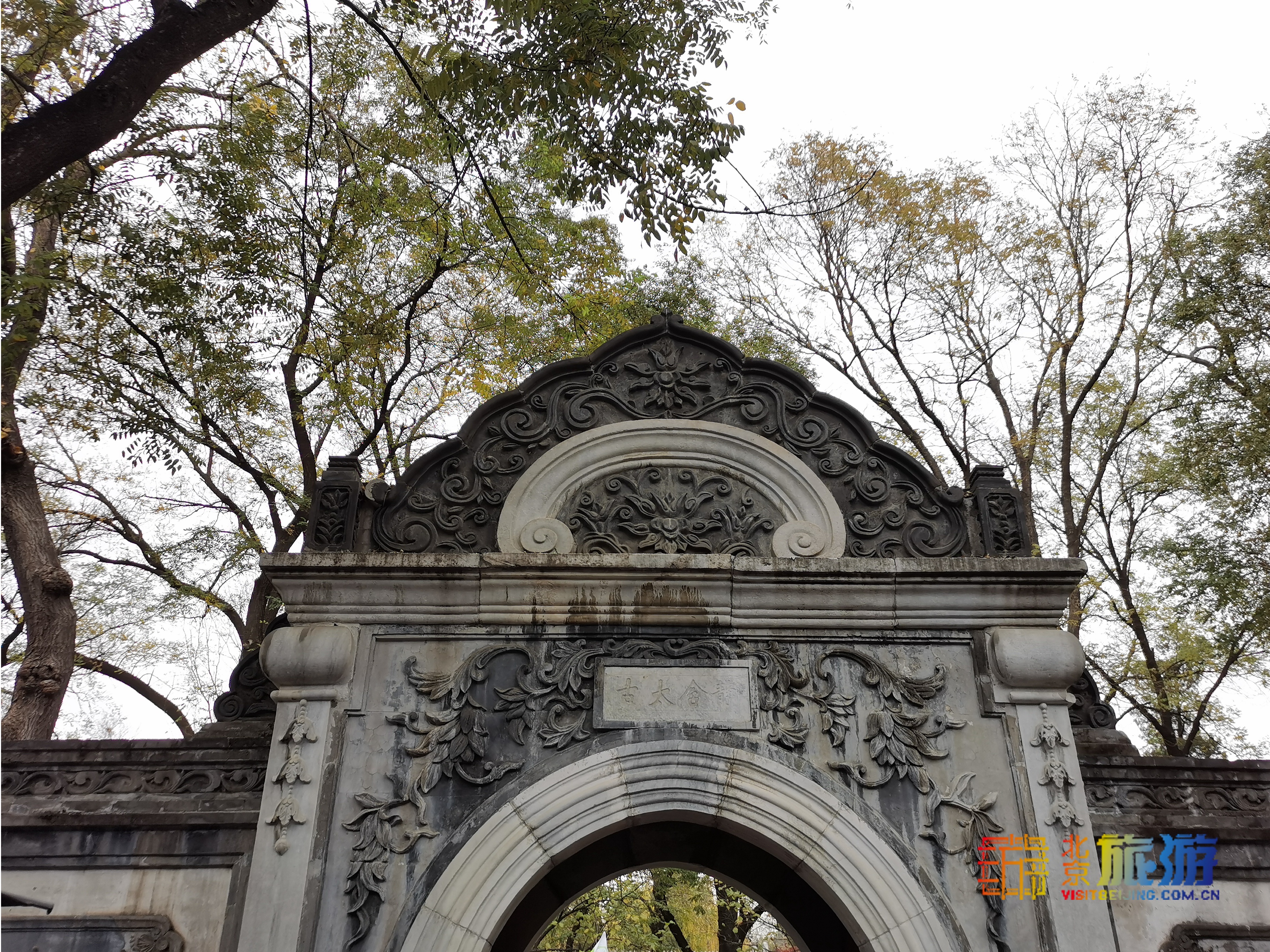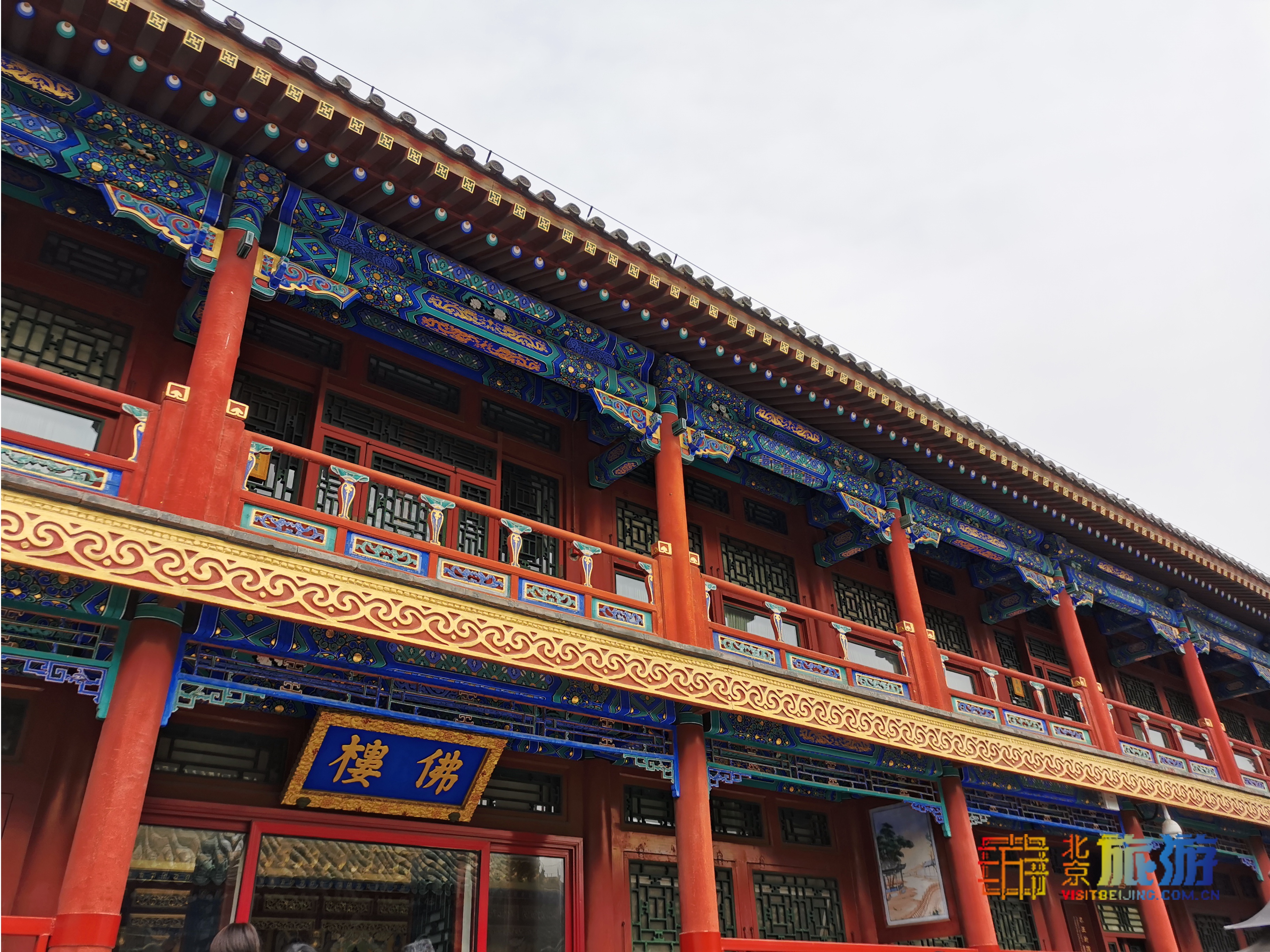Prince Mansion culture plays an important role in Chinese traditions as it connects court life with civilian life. Situated along Qianhai Xijie in Xicheng district Beijing, Prince Gong’s Mansion, best representing the Chinese mansion culture, is the most complete mansion preserved till present and was one of the national key relics under protection.

HistoryIn the 41st year during the reign of Emperor Qianlong in 1776, Heshen was about to have his luxurious residence constructed on this land which is by the Front Lake to the east and the Rear Lake (Houhai) to the back, under the so-called name of “He’s Mansion”. It is said the former eunuch Li Guang during the Emperor Hongzhi’s reign in Ming Dynasty, also homed in this location. At 3rd, Lunar January on the 4th year of Emperor Jiaqing, the emperor’s father Hongli perished. On the second day, Jiaqing removed Heshen from his two positions: Minister of Military and Nine-Gate Commander-in-chief, confiscated his property totaling 800 million silver dollar, which equals the accumulation of treasury income for a decade. Therefore there existed a saying that once Heshen fell, Emperor Jiaqing would be full. At 18th Lunar January the same year, which was February 22, 1799, Heshen was sentenced to death by committing suicide. The mansion fell into the hands of younger brother Prince Qingxi, Yonglin who preferred luxurious residence to power. Meanwhile, Princess Hexiao, the daughter of Emperor Qianlong remained living in half of the mansion. It was not until in the first year of Emperor Xianfeng’s reign (1851) that Prince Gong succeeded the mansion to be the third host and rename it the Prince Gong’s Mansion, which was used till present.“Prince Gong’s Mansion tells half Qing Dynasty history”, remarked the historical geologist Hou Renzhi.

In early years of the Republic of China, the mansion was sold to the church by Fu Wei, the grandson of Prince Gong at the price of 0.4 million silver dollar. It was later redeemed by Fu Jen Catholic University with 108 gold bars and changed into a girls’ school. Since the establishment of the new People’s Republic of China, it has accommodated many units such as the Ministry of Public Security, air blower factory, conservatory of music and so on.Geographic location“Winding river surrounds the residence like a hidden dragon, the Western Hills guarded it from afar like a crouching tigers”. This is the description of Prince Gong’s Mansion in history records. In terms of location, it has occupied an extraordinary site in Beijing. It’s known that ancient people pay much attention to Fengshui regarding residence and gardens. Beijing was said to have two dragon veins. One is of the earth dragon, namely that of the Palace Museum. The other refers to the water dragon, indicating the line between Houhai and Beihai. Prince Gong’s Mansion locates right on the line to generate extraordinary Fengshui. Ancient Chinese resembles water as fortune. In Prince Gong’s Mansion water can be found everywhere. The water from the largest lake was channeled from Jade Spring Lake, which only flowed in rather than out, so as to gather fortune. Our grand ten marshals, Guo Moruo and many others have all lived around the mansion and proved to have a long life. This location proves precious in Fengshui for it generated many older men with longevity.In the scenic southwest corner of Beijing Shichahai Lake, there lies a quiet, long street in verdant, on which stands a mansion, one of the most integrated mansions preserved nowadays. It used to be a powerful minister Heshen’s residence at Emperor Qianlong’s reign and then the possession of Yonglin, younger brother of Emperor Jiaqing.PatternPrince Gong’s Mansion, composed of mansion houses and gardens, is one of the most complete mansions preserved today. Houses are in front of gardens. Whether to open the mansion to public or not has been put on the agenda 30 years ago. In 1975, Premier Zhou entrusted three unfinished things to Gu Mu, including the opening issue of the mansion.With an area of 31,000 square meters, the complex of the mansion can be divided into three parts: in the middle, to the east and to the west. Three categories are confined by strict axis lines and are made up with quadrangle courtyards. The houses are not only wide, but also at the highest limit. A clear sign is the quantity of door units and house numbers. The mansion has five door units, seven main halls, five back halls, seven back bedrooms with side halls on both sides. If the owner of a mansion is lower than Prince in rank, he is not supposed to exceed those numbers, patterns or even the color of tiles. There are three yards leading to the middle, east and west parts. The two yards behind are main areas to visit.Yin’an HallYin’an Hall, usually called Yinluan Hall, is the main building in the mansion. It’s only open to the public in big events or festivals to play a ritual role. In the early Republic of China, due to accident fire, the hall was burnt along with side halls in the east and west. The current Yin’an Hall was a reconstruction of the building in the times of Heshen. It still hangs a plaque inscribed "Jiale Hall", an alleged gift from Emperor Qianlong. Since no signature, no inscription marks were left, there’s no ground for this. Since Heshen did own the Jiale Hall Poem Collections, the plague must have belonged to him. Jiale Hall was mainly used for offering sacrifice to ancestors mainly in Shamanism ceremony.The Mansion of the PrinceIn the scenic southwest corner of Beijing Shichahai, there lies a quiet, long street in verdant, on which stands a mansion, one of the most integrated mansions preserved nowadays. It used to be a powerful minister Heshen’s residence during Emperor Qianlong’s reign and then the possession of Yonglin, younger brother of Emperor Jiaqing.

Being the possession of a Prince in the Qing Dynasty, the mansion fully exhibits the combined essences between royal splendor and folk neatness with its neat layout, exquisite skills and many buildings. It’s composed of two parts including the mansion houses and gardens. It stretches 330 meters length from the south to the north and 180 meters width from the east to the west. It covers an area of 61,120 square meters, among which the housing accounts for 32,260 square meters and the gardens 28,860 square meters.Internal StructureThe complex of the mansion can be divided into three parts: in the middle, to the east and to the west. Three categories are confined by strict axis lines and are made up with quadrangle courtyards. Main buildings on the middle path are Yin’an Hall and Jiale Hall, the roofs of which were paved with green glaze tiles to stress dignity and represent the noble identity of the Prince. The main hall in the front yard on the east path is titled Duofu Pavilion, with wisteria that has grown for over 200 years and remained thriving, a rare phenomenon in Beijing. The main hall in the backyards on the east path is named “Ledao Hall”, the living place for the Prince Gong. Quadrangle courtyards on the west path are exquisite and refined, with main halls named Baoguang Room and Xijin Room. Xijin Room excelled all for its grandeur and manner. Its hall is decorated with refined phoebe zhennan partition, in the same pattern as that in the Palace of Tranquil Longevity in the Forbidden City. (Heshen was sentenced to death on twenty accusations. To imitate the pattern in the Forbidden City was one of them.) Down through the mansion, in the deepest end stands a two-storeyed building at the length of 156 meters, with 88 windows on the back wall and 108 rooms inside to indicate 99 rooms and a half, conveying Taoist philosophy that being almost equals fullness.The GardenThe Prince Gong’s garden is named Langrun or Cuijin Garden. Walking there is like wandering between hills and rivers. Like the mansion houses, the gardens are categorized into three parts, the middle, the east and the west. On the middle path, the entrance is a western style arched stone gate in white marble. Centering on a monument with a character "Fu" inscribed by Emperor Qianlong, the place has Dule Peak and Bat Pool in front, Lvtianxiaoyin and Bat Hall in the back, designed in a meaningful pattern. The drama hall on the east path is decorated in a fresh manner. As wisteria flowers blossom, watching dramas under the climbing plant shelf is like a dream. Mingdao House to the south of Grand Drama Tower composed the gardens of garden with other five scenic spots such as where paths meet, favor shade, chanting the fragrance and drunk under the moonlight and Liubei Pavilion. Within the garden abounding with towering ancient trees and exquisite stones, surrounding hills meet with water and winding corridors joint the path. Scenery under the moonlight varies. Many tourists both nationally and internationally are attracted here to search for the smoky history between the verdant hills and water or at the turn of winding path.Situated at the west street of the Qianhai, Prince Gong’s mansion was established from 1776 to 1785. It used to be the residence of the Qing minster Heshen favored by Emperor Qianlong, who was sentenced death on the charge of corruption, after his property was confiscated by Emperor Jiaqing, who then gifted the mansion to his brother. During Emperor Tongzhi’s reign, as the Prince Gong made contributions by helping Empress Cixi with a coup, the Empress thus gifted the mansion to him. Here comes the Prince Gong’s Mansion.Vast in ScaleThe Prince Gong’s Mansion is vast in scale. With an area of about 60,000 square meters, composed of houses and gardens, it contains over 30 complexes in various style and exquisite pattern.

The garden, also named Jincui Garden, is an imitation of Palace of Tranquil Longevity in the Imperial Palace, at high artistic level both in overall arrangement and design. The garden is surrounded by rockwork arranged like a Chinese character “shan (山)” (meaning mountain). In the east, south and west are hills accumulated by soil and rock while in the middle is a hill made by rocks from Fangshan, in a tactful manner. The platform at the top of hill is the highest location within. Standing on the platform, one can relish the whole view of the garden.



